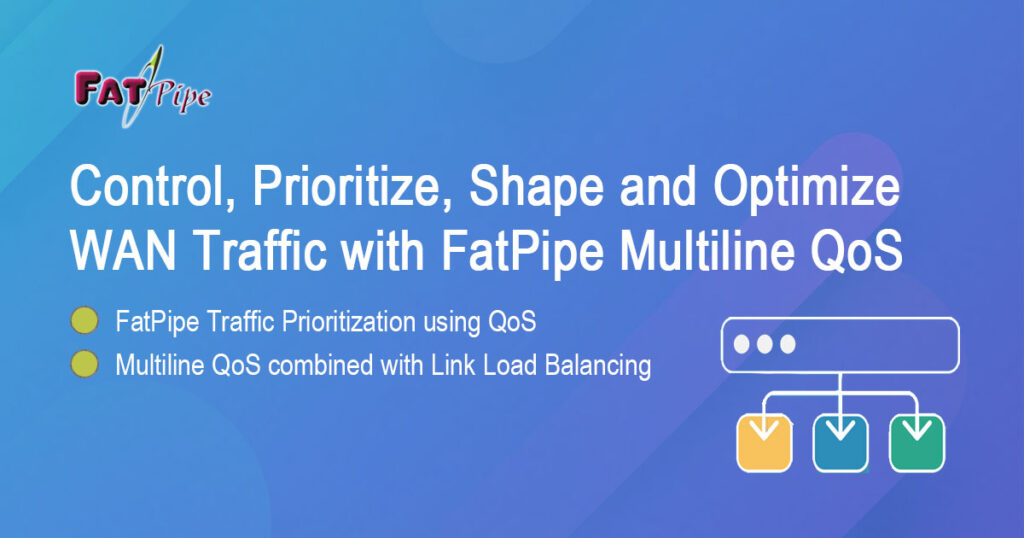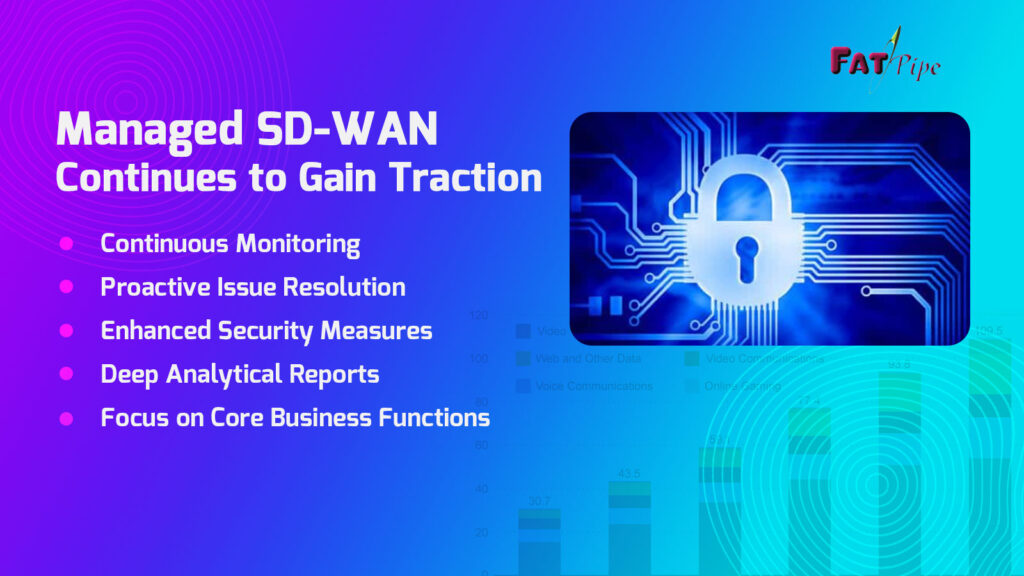Control, Prioritize, Shape and Optimize WAN Traffic with FatPipe Multiline QoS
 In a busy corporate network, imagine a scenario where real-time voice/video and critical business applications contend with routine tasks for bandwidth. This is an unavoidable situation sometimes but it results in stakeholders’ dissatisfaction and business monetary loss. Traffic prioritization resolves this by intelligently assigning priority levels, optimizing data flow, and refining overall network efficiency. FatPipe SD-WAN employs traffic prioritization for assurance that packets are transported from a source to a destination with certain characteristics corresponding to the requirements of the service that the packet flow supports. FatPipe SD-WAN also dynamically routes traffic through the most efficient path and adjusts real-time prioritization.
In a busy corporate network, imagine a scenario where real-time voice/video and critical business applications contend with routine tasks for bandwidth. This is an unavoidable situation sometimes but it results in stakeholders’ dissatisfaction and business monetary loss. Traffic prioritization resolves this by intelligently assigning priority levels, optimizing data flow, and refining overall network efficiency. FatPipe SD-WAN employs traffic prioritization for assurance that packets are transported from a source to a destination with certain characteristics corresponding to the requirements of the service that the packet flow supports. FatPipe SD-WAN also dynamically routes traffic through the most efficient path and adjusts real-time prioritization.
FatPipe traffic prioritization ensures the user assigns a certain amount of bandwidth to each type of traffic, and it is defined by committed rate (CR) and Burst rate. Committed rate of a traffic type defines the amount of bandwidth guaranteed to be available for that type of traffic at any time the associated link is up. Burst rate is required for QoS and defines the upper limit for bandwidth that can be made available to the traffic type. This helps maintain a fair and efficient use of the company’s Internet resources.
FatPipe Traffic Prioritization using QoS
FatPipe’s traffic prioritization controls the traffic volume entering a network using Quality of Service (QoS) policies. FatPipe QoS also controls incoming network traffic by letting the user limit the rate at which the LAN receives traffic from each WAN link. While this does not help conserve bandwidth, it can help reduce unwanted connection-oriented traffic. The Inbound Policed Rate defines the limit above to which all incoming traffic that it applies will be dropped. FatPipe QoS can classify packets based on the application they belong to. FatPipe QoS can also work with application-specific information regardless of port numbers used by transport protocols. FatPipe SD-WAN also provides the capability of scheduling QoS policies for eg., if the Chairman of Company wants to have company-wide Video Conferencing on a specific date and time in the future, the QoS policies can be configured to give priority to Video traffic on that particular date and time providing peace of mind to network administrators.
Multiline QoS combined with Link Load Balancing
FatPipe’s improved Multi-line QoS technology includes application layer multi-lineQoS (layer 7) in addition to the networking layer where you can assign bandwidth by IP orport (layers 3 and 4). Unlike traditional Multi-line QoS, FatPipe Multi-line QoS is combined with link load balancing, which ensures that rules are applied to additional or secondary lines when a failure occurs to your primary WAN line, providing redundancy for your WAN infrastructure data transmissions.




